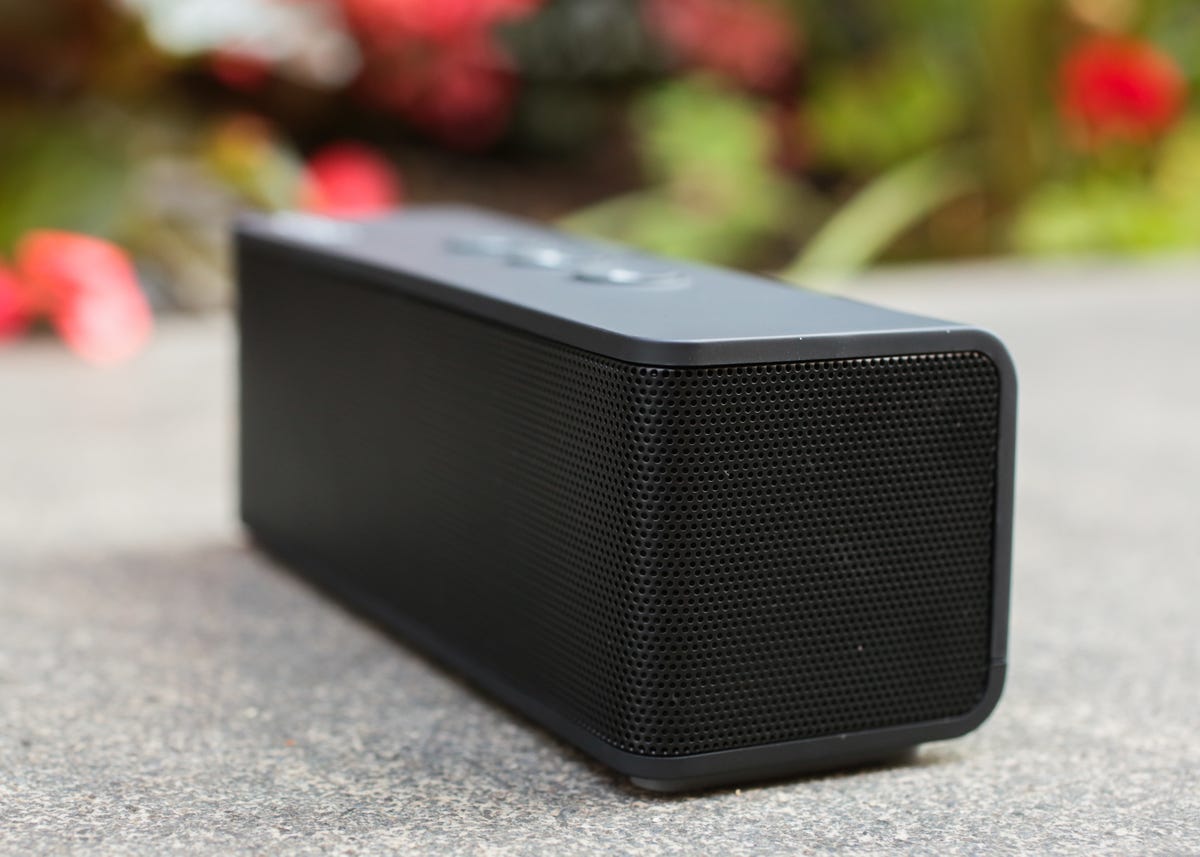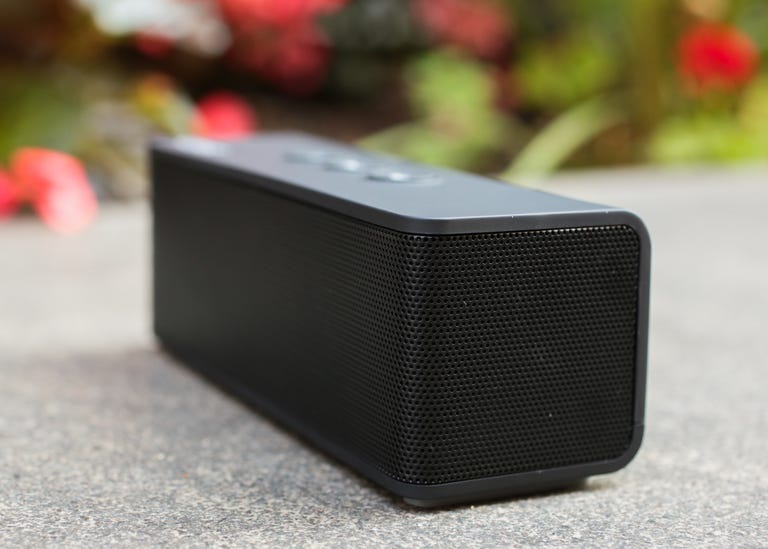 Why You Can Trust CNET
Why You Can Trust CNET Urge Basics Soundbrick Bluetooth speaker review: A simple but solid wireless speaker
There may not be anything particularly spectacular about the $60 Urge Basics Soundbrick, but it's a solid wireless Bluetooth speaker that sounds better than some competing products in this price class.
If you go on Amazon looking for wireless Bluetooth speakers, you'll come across many from companies you've never heard of. The Urge Basics Soundbrick, which retails for around $60, is one such speaker.
The Good
The Bad
The Bottom Line
Like a lot of these products, it's got a somewhat generic design, but I liked its simple understated look. It keeps things simple with three buttons on top (volume up/down and a pause/play button that doubles as a call answer/button for the integrated speakerphone), and you'll find a power switch around back along with a Micro-USB port for charging the built-in rechargeable battery, and both a line input and output.
That line output will allow you to string a couple of speakers together for somewhat bigger sound or connect the speaker to a larger stereo or home-theater system and use the Soundbrick as a wireless transceiver to stream music from your smartphone or other Bluetooth-enabled device to larger speakers.
The speaker seems pretty well built and weighs in at 0.74 pound. It's almost exactly the same width and height as the Jawbone Jambox but it's got a bit more depth -- the speaker measure 6.0 x 2.2 x 2.2 inches (HWD). Inside there are two drivers, so this is ostensibly a stereo speaker (2 x 1.5W), though the drivers are so close together you get little to no stereo separation. Battery life is rated at 8 hours, which is about average for these types of inexpensive small Bluetooth speakers.

My only serious gripe about the design is the blue light on the front of the speaker. It goes on when the speaker goes on (along with a short beep) but then pulsates after you've paired the speaker with your smartphone (or other device). Some people won't mind that flashing light, but others will find it really annoying. Ideally, of course, you should be able to turn it off.
While the Soundbrick doesn't have a USB port for charging devices (with some speakers, you can use the unit's built-in battery to charge your smartphone and other portable devices), the feature set is pretty solid. I though the speakerphone worked OK not great -- you do have to be fairly close to the microphone for callers to hear you well -- but at least the capability is there for those who need it.
Beyond the reasonably good design and feature set, the real reason to consider this speaker is that it sounds OK. No, you shouldn't expect fantastic sound, but it does sound less tinny compared with some other speakers in this price class. It's got a bit more bass (the bass port is on the bottom of the speaker), and while you'll get some distortion when you crank the volume on the speaker and your device, the sound holds up pretty well and has a reasonable amount of detail.
It's not going to sound as good as the Jawbone Jambox (the Jambox delivers more bass), but then again it costs less than half the price. Speakers such as the $99
Conclusion
I wasn't able to compare the Urge Basics Soundbrick to every no-name speaker out there, so I can't tell you whether competitors like the $39.99 Photive Cyren or Kinivo BTX270 sound better for less. All I can tell you is that the Soundbrick has a simple, decent design, a solid feature set, and has a bit more bass and sounds better than some of the other "budget" Bluetooth speakers. At $60, it's priced pretty well, but I do think that with all the competition, it will have to dip below $50 to be considered a true bargain.


